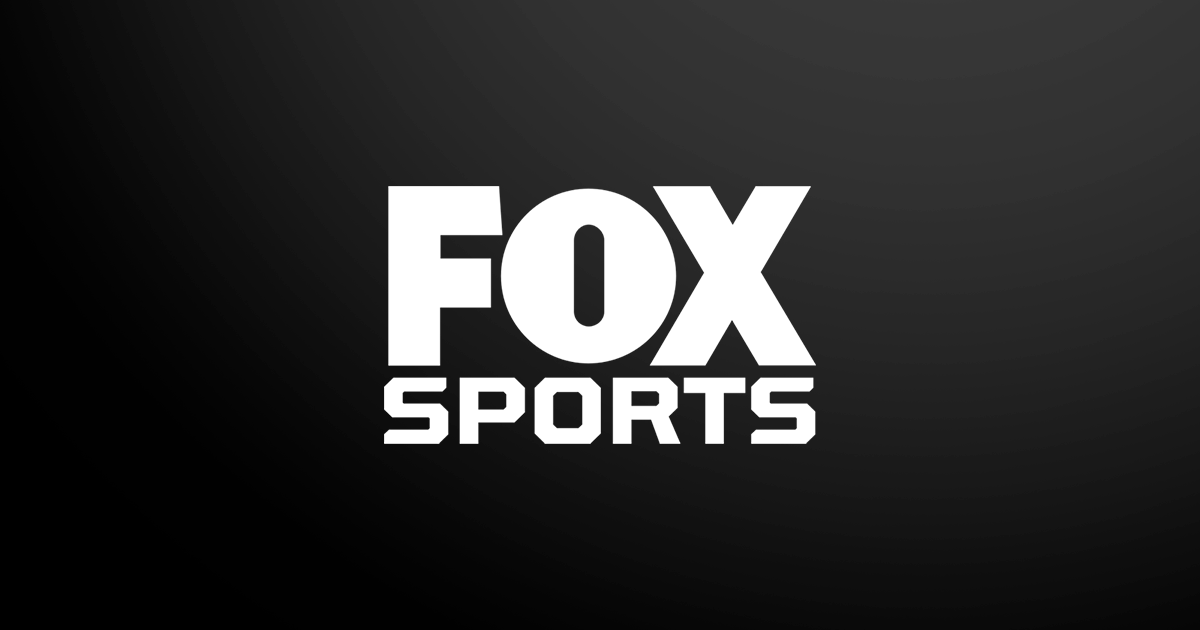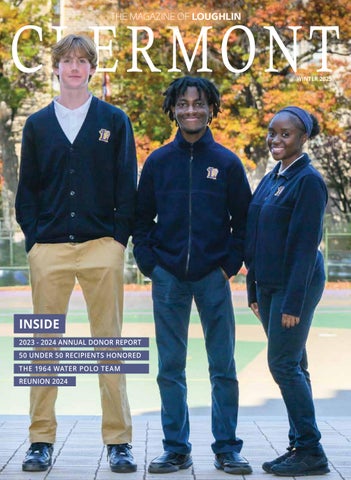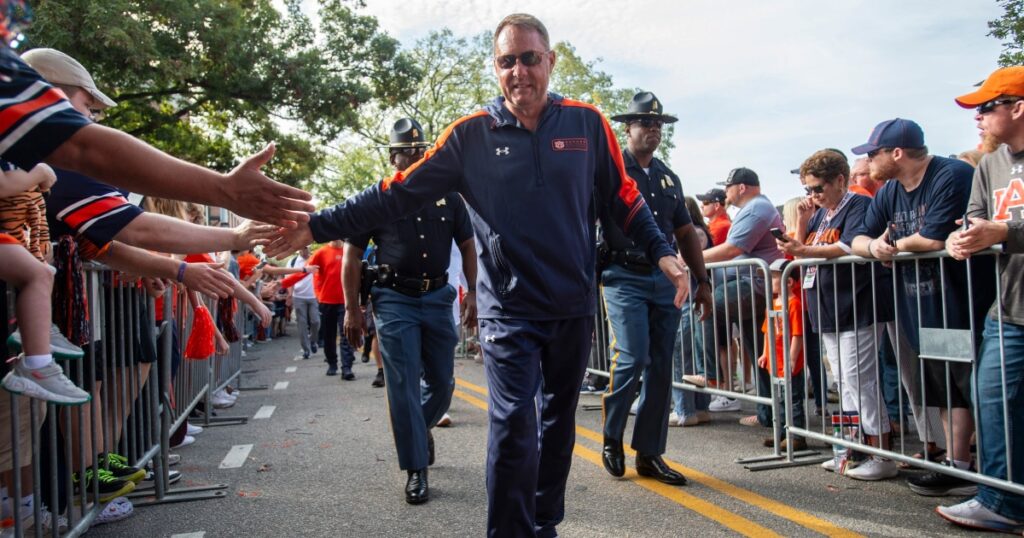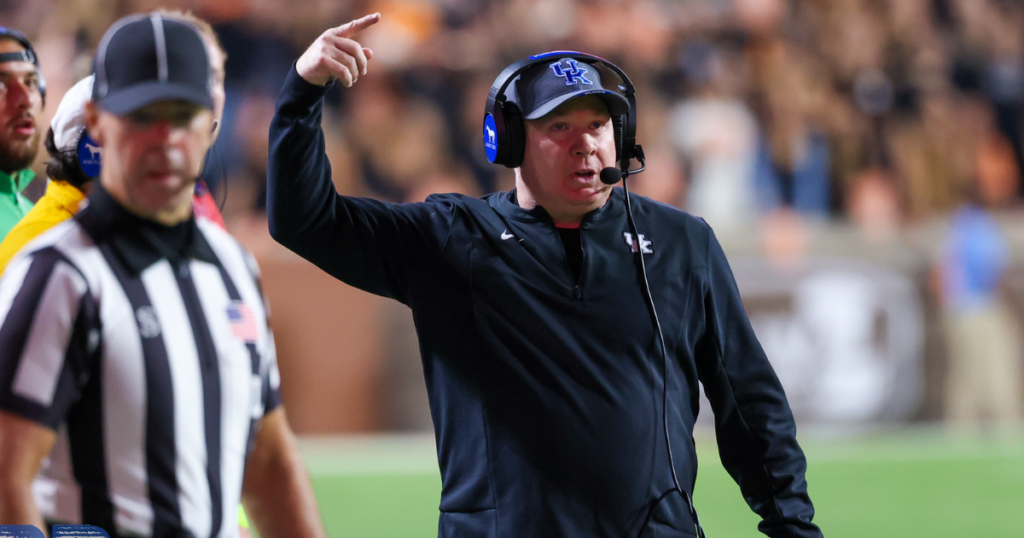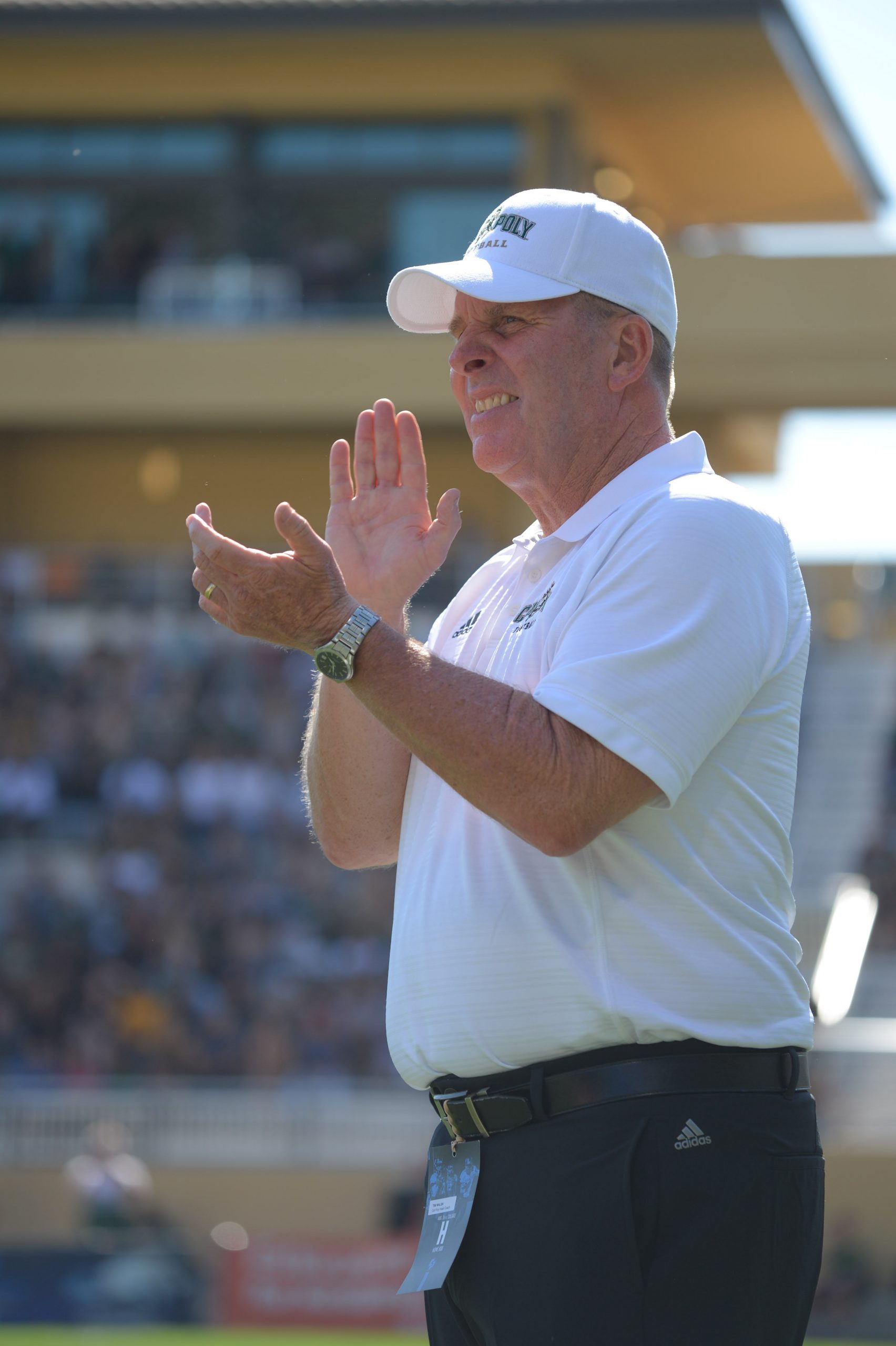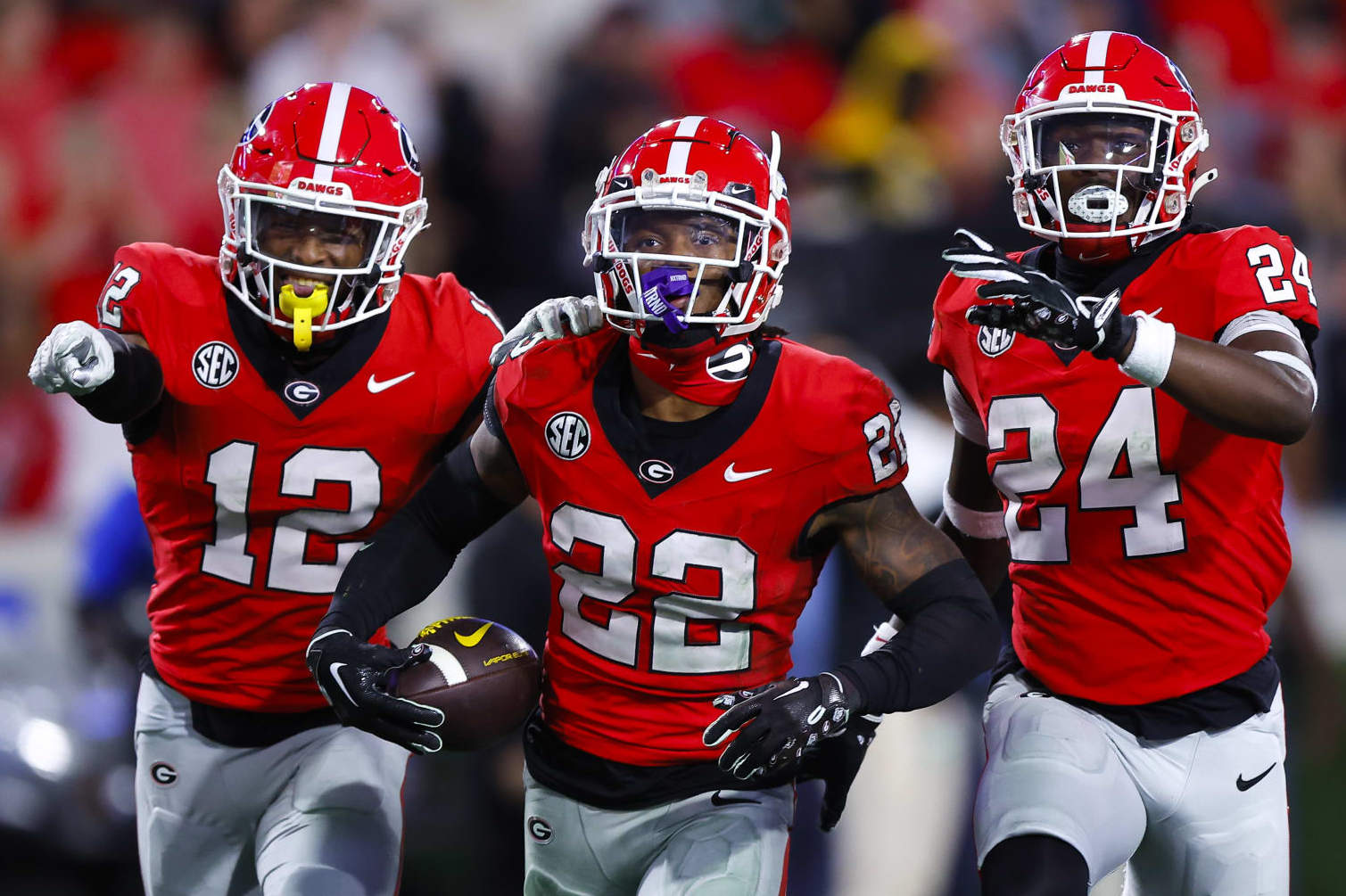
Whether through the transfer portal or a fresh wave of high school talent, college football teams across the country have replenished their rosters and even had a chance to evaluate some of their early enrollees during spring football.
Rosters are now mostly set and preseason camp is a few months away. It is a perfect time to project newcomers who could have the biggest impact on the 2025 season for each of the teams on Mark Schlabach’s Way-Too-Early Top 25 list.

Top newcomer: WR Trebor Pena (Transferred from Syracuse)
Why: While tight end Tyler Warren lined up everywhere and caught 104 passes for 1,223 yards last year, Penn State hasn’t had a dominant wide receiver since Jahan Dotson and didn’t have an impact option out wide in 2024. The Nittany Lions moved swiftly to overhaul the position, also adding Kyron Hudson (USC) and Devonte Ross (Troy), but Pena was the clear-cut top receiving threat in the spring portal. Pena has the skill set — and the mettle — to deliver in critical situations and be a go-to receiver for Drew Allar. Last season, Pena teamed with Kyle McCord at Syracuse to catch 84 passes for 941 yards and nine touchdowns.
What to expect: Look for Pena to become Allar’s consistent underneath checkdown target, particularly on key third-down conversions. Pena is versatile, reliable and slippery in tight quarters. Even if he doesn’t match his 84-catch pace at Penn State, which doesn’t pass nearly as often as Syracuse does, he should still replace some of the production and versatility void left behind by Warren. The sixth-year senior should catch on fast in Happy Valley despite missing spring practice. He’ll be the reliable slot who dominates zone coverage with savvy route running and sudden breaks to create separation. Don’t underestimate his quick impact in the return game as well.
Top newcomer: RB Gideon Davidson (No. 59 in the ESPN 300)
Why: The third-best running back in the 2025 ESPN 300, Davidson is a great example of how enrolling early can help springboard a freshman toward an immediate impact. Early signs are that he resembles Travis Etienne with his quick read and cut ability and could step in immediately to help replace 1,100-yard rusher Phil Mafah. Davidson was Virginia’s 2024 Gatorade Player of the Year and tallied more than 8,000 yards from scrimmage as a high schooler. His youth shouldn’t hold him back given Clemson’s otherwise inexperienced running back room.
What to expect: Davidson isn’t as big as Mafah, but he’s faster and will add a more explosive cutback element on zone runs. His great vision and speed should fit nicely into Clemson’s schemes. Clemson could utilize him quickly as a change-of-pace, all-purpose back if he’s not the featured back by the time the season opens. Clemson’s experienced passing game is the perfect antidote to take some pressure off the freshman.
![]() Freshman Gideon Davidson steps into an inexperienced running back room at Clemson. ClemsonTop newcomer: TE Jack Endries (Transferred from Cal)
Freshman Gideon Davidson steps into an inexperienced running back room at Clemson. ClemsonTop newcomer: TE Jack Endries (Transferred from Cal)
Why: Don’t undervalue a trusted pass catcher at this position for a playoff contender with a new starting quarterback. Gunnar Helm was extremely productive in Steve Sarkisian’s offense last season with 60 catches for 786 receiving yards and seven scores. Endries is cut from the same cloth. He has soft hands with explosive potential after the catch, deceptive speed and elusiveness. Endries might not be quite as athletic as Helm, but he’s agile with good body control and runs very efficient routes to get open and catch the football. He led Cal in both catches (56) and yards (623) last season.
What to expect: Endries’ production may actually drop a bit at Texas, but he’ll play a vital role for a national championship contender and offer quarterback Arch Manning a much-needed safety valve. Endries is an every-down presence who can do whatever an offense requires. He uses his strong body to rub off defenders and create separation on crossing routes. Endries will prove to be a productive blocker and pass catcher in a fairly inexperienced tight ends room. Although Endries didn’t get the benefit of jelling with Manning in spring ball, he has a high IQ for both his position and the overall game. He played in multiple offensive schemes at Cal and should make a smooth transition in Austin.
Top newcomer: WR Zachariah Branch (Transferred from USC)
Why: While Talyn Taylor will have an impactful season as a true freshman, Branch has experience. He has been one of college football’s truly dynamic talents with the ball in his hands. He arrived in college with 4.39 40-yard dash speed and became an instant playmaker for the Trojans in the return game. He was the program’s first-ever freshman to be named a first-team All-American. After his production stagnated as a sophomore, he hopped in the portal. His playmaking ability is a welcomed addition for a Georgia offense that was anything but surehanded at wide receiver in 2024, leading all FBS programs with 36 receiver drops, according to ESPN Research. Branch should take some of the pressure off new Bulldogs quarterback Gunner Stockton.
What to expect: Branch could have the best season of his career in Athens and help the Dawgs offense become more consistent than a year ago. He’s the ultimate underneath checkdown and safety valve who can create separation with his suddenness and will complement Georgia’s bigger outside targets, such as Texas A&M transfer Noah Thomas, to create mismatches. He’s explosive with the ball in his hands after the catch as well. Without great returning running back production, expect offensive coordinator Mike Bobo to feature Branch creatively on screens, jet sweeps, quick slants and crossers to maximize his ability after the catch in space, He should become a go-to third-down option for Stockton.
Top newcomer: TE Max Klare (Transferred from Purdue)
Why: The Buckeyes will introduce a group of new starters on offense this season including quarterback Julian Sayin. What’s the best weapon for a new quarterback? How about an elite pass-catching tight end with excellent hands and polished route-running skills who won’t receive a lot of defensive attention? Despite Purdue’s anemic offense, Klare managed an impressive 51 catches for 685 yards last season and the Boilermakers utilized him to create mismatches in the passing game through multiple sets and formations. At 6-foot-4, Klare moves well and adjusts to difficult throws while also creating separation as a route runner. He’s a great runner who gets up the seam quickly as a downfield threat.
What to expect: Klare is a versatile big-play target who will double his touchdowns and increase his yards per catch in the Buckeyes’ offense, but his volume might go down. Defenses will focus so much on defending wide receivers Jeremiah Smith and Carnell Tate that Klare will be left to cash in on opportunities underneath. Look for coach Ryan Day to get creative with his new playmaker to create mismatches on less athletic linebackers in single coverage and rack up record-breaking offensive numbers.
Top newcomer: Edge Patrick Payton (Transferred from Florida State)
Why: Will Campbell became an instant starter at LSU and just went fourth overall to the Patriots. So, it’s easy to look at incoming five-star offensive tackle Solomon Thomas as a natural successor. But LSU’s most impactful newcomer will be someone who gets after quarterbacks, not protects them. Payton should be plenty motivated to make an immediate impact. He notched seven sacks in 2023 alongside future pros Jared Verse and Braden Fiske, but his production went backward in a leading role. Once viewed as a potential high draft pick, the clock’s ticking for Payton to prove he can be the leading man in his final year of eligibility. The Tigers need it after losing top edge rushers Bradyn Swinson and Sai’vion Jones, who combined for 13 sacks in 2024.
What to expect: Double-digit sacks. Payton has a better supporting cast around him and a scheme to get back to form. What does that mean for SEC foes? A Day 1 NFL draft talent screaming off the edge. He’s lengthy, fluid and explosive and can bend the corner and close on quarterbacks when he’s on his game and motivated. Consistency is the issue, but Payton has a fresh start and eyes on the NFL prize. He has a dynamic skill set, as he can drop in coverage and chase plays down in space, but his speed and length will be utilized best as a pass-rush specialist.
Top newcomer: WR Malachi Fields (Transferred from Virginia)
Why: With Steve Angeli‘s transfer to Syracuse, all signs point to coach Marcus Freeman handing his offense over to redshirt freshman CJ Carr — a big ask for an unproven, young quarterback in a program that reached the national title game last year. Adding a player like Fields will take some pressure off Carr. Fields is a massive target and contested-catch specialist at 6-foot-4, 220 pounds who was plenty effective at Virginia despite topsy-turvy quarterback play. He finished eighth in the ACC with 808 receiving yards on 55 catches, nearly mirroring his 2023 production. Fields was also a team captain at Virginia and is well-equipped to step into the spotlight for the Fighting Irish in his final year of eligibility.
What to expect: More explosive downfield plays in South Bend. Freeman has been selective in the transfer portal, but there are big plans for Fields in 2025. He should break out and actually surpass his production at Virginia given his superior surrounding cast at Notre Dame. Fields is an immediate upgrade over Notre Dame’s returning receivers, as well as the departing duo of Jayden Thomas (Transferred to Virginia) and Beaux Collins (New York Giants). Fields is a proven receiver with all the physical attributes to help Carr acclimate quickly as a rookie quarterback, serving as a big-bodied, athletic target on the outside. Fields is arguably a sharper route runner and a more durable, consistent outside threat than Collins, who averaged 12 yards per catch last year.
Top newcomer: WR Dakorien Moore (No. 4 in the ESPN 300)
Why: In the transfer portal era, it’s harder than ever for freshmen to make an immediate impact. But this isn’t your typical freshman. Moore is the highest-graded receiver ESPN has evaluated since 2020. His 93 grade tops recent five-stars such as Ryan Williams and Jeremiah Smith in 2024, Zachariah Branch in 2023 and Luther Burden III in 2022. The 2025 Under Armour All-American game MVP, Moore notched more than 4,000 receiving yards in a battle-tested environment at Duncanville (Texas) High School, where he ran a scorching 10.4 100-meter dash and anchored the school’s 4×200 relay team that set a national record last spring with a time of 1:22.25. New Ducks starting quarterback Dante Moore will benefit from a blazing underneath weapon who is a menace after the catch.
What to expect: Moore will be a starter by midseason — he’s simply too talented to keep off the field. He’s a bigger, faster version of Tez Johnson, who led Oregon in receiving last season and was drafted in the seventh round by the Buccaneers. Moore’s dynamic skills should allow the Ducks to move veteran playmaker Evan Stewart around more within the offense. Moore is confident, competitive and smart. Being on campus this spring was extremely beneficial for his acclimation to high-level college football. Moore checks all the boxes physically, and Oregon knows it can use him in a variety of ways.
![]() Dakorien Moore is one of the best-rated wide receiver prospects since 2006. Under ArmourTop newcomer: WR Lotzeir Brooks (No. 102 in the ESPN 300)
Dakorien Moore is one of the best-rated wide receiver prospects since 2006. Under ArmourTop newcomer: WR Lotzeir Brooks (No. 102 in the ESPN 300)
Why: Alabama wasn’t particularly aggressive in the transfer portal, so there could be an opportunity for a freshman from its fourth-ranked recruiting class to emerge. The 5-9, 180-pound Brooks is the most decorated high school receiver to come out of New Jersey, setting the state record for receiving yards (4,615) and touchdowns (67). He arrived in Tuscaloosa early and turned heads in Alabama’s spring practices as a slot receiver.
What to expect: Playing alongside sophomore Ryan Williams, Brooks could emerge as a contributor in Kalen DeBoer’s offense as the season progresses. He’s small but dynamic and very quick and sudden in his movements. Brooks creates separation as a route runner, especially underneath. He’s a chain-mover after the catch with great burst and acceleration, and he sees the field well. Brooks could show off those attributes early on as a punt returner as well.
Top newcomer: DT Keanu Tanuvasa (Transferred from Utah)
Why: BYU ranked 13th in FBS team defense last year, and its opportunistic secondary led the Big 12 with 22 interceptions. But its defensive front, which wasn’t overly disruptive, lost four starters, and the Cougars didn’t have any players drafted. If Tanuvasa stays healthy and plays up to his potential, both of those things will change in the near future. Tanuvasa started 19 of 24 games for the Utes and was an All-Big 12 honorable mention last year despite playing in only seven games because of injuries. The 6-4, 301-pounder has two years of eligibility remaining, but it won’t be a surprise if he garners early-round draft consideration should he play a full season. Until then, he’ll be the type of interior defensive presence Kalani Sitake loves to build around.
What to expect: His stats won’t jump off the page, but he will require double-teams and full attention from opposing offenses, freeing up the Cougars’ pass rushers off the edge. If teams try to single-block Tanuvasa, expect pockets to collapse quickly because of his quickness, power and high motor. His stout presence will eat up blocks and free talented linebackers Isaiah Glasker and Jack Kelly to make plays behind the line of scrimmage versus the run. The void up front left by Tyler Batty & Co. won’t be noticeable because of Tanuvasa’s production and leadership.

Top newcomer: WR Hudson Clement (Transferred from West Virginia)
Why: The Illini have desirable continuity at quarterback with Luke Altmyer returning for his third season. Now, they need to surround him with playmaking and experience, especially considering their lack of chunk plays in 2024. So while true freshman receiver Brayden Trimble is someone to watch, Clement has college experience. A former West Virginia walk-on, Clement started 19 games over the past two seasons, including 12 last year, when he set career highs in receptions (51) and yards (741). Pat Bryant and Zakhari Franklin combined for 51% of Illinois’ receptions last season. Both have moved on, meaning there’s a ton of opportunity for Clement to quickly get up to speed and become Altmyer’s new favorite target.
What to expect: Clement will end the season as Illinois’ most productive receiver and the top target for Altmyer. His upside is extremely high and he’s an experienced Power 4 veteran. Clement showed flashes this spring and has a mix of Bryant’s and Franklin’s traits. The 6-foot-1, 205 pounder has a nice frame and a savvy feel for navigating zone coverage and finding the soft spots in the second and third levels of the defense. Clement is a very reliable downfield target with excellent hands and body control. His leadership experience in the wide receiver room will be just as important as his play on the field.

Top newcomer: RB Kanye Udoh (Transferred from Army)
Why: Following Cam Skattebo will require a certain kind of mental toughness, which is exactly what Udoh brings after spending two years at Army. It’s unfair to assume any player can replace Skattebo, who had over 2,300 combined yards last year for a College Football Playoff contender and made an outsized off-the-field impact on the program as well before departing for the NFL. Udoh was used immediately at Army, running for 524 yards as a freshman, then followed it up with a 1,117-yard campaign last year with 10 touchdowns on 6.2 yards per touch.
What to expect: The continuation of a ground-and-pound offense. Udoh will fill the production void left by Skattebo with a similar physical presence that wears down a defense, eats the clock and makes him a fan favorite like his predecessor. Udoh actually has better acceleration out of his cuts and top-end speed than Skattebo. If he falls short on production, Kyson Brown and Raleek Brown will help pick up the slack for one of the best backfields in the Big 12.
Top newcomer: C Boaz Stanley (Transferred from Troy)
Why: The Gamecocks have the talent to break through and reach the College Football Playoff for the first time, and dual-threat quarterback LaNorris Sellers has a very real chance to become the first quarterback drafted following the 2025 season. But those expectations could come crashing down if South Carolina can’t solidify its foundation from the inside out, which is no sure thing considering the Gamecocks must replace their entire interior starting line from last season. Stanley should be a steadying presence at center. The 6-foot-4, 310-pound Troy transfer arrives with plenty of starting experience, the versatility to kick out to tackle in a pinch and a technically sound play style — he didn’t commit any penalties in 2024.
What to expect: Stanley will be the catalyst behind an explosive South Carolina offense that exceeds expectations. He will keep Sellers upright and open holes for transfer running back Rahsul Faison, who could challenge Stanley as the top newcomer in Columbia. Stanley has a powerful lower body and excellent base to anchor in pass protection and drive blockers off the ball on downhill run schemes. South Carolina will covet his versatility to play either on the interior or outside at tackle. While his physicality and leverage will draw rave reviews, his leadership qualities at the key center position and finishing attitude will make Gamecocks teammates better around him.
Top newcomer: WR Chase Sowell (Transferred from East Carolina)
Why: Sowell has big shoes to fill in Ames. Iowa State is coming off the most wins in program history (11), and the Houston Texans just drafted a pair of Cyclones receivers, Jayden Higgins and Jaylin Noel, in the second and third rounds, respectively. Higgins and Noel combined for just over 60% of Iowa State’s receptions a year ago. The 6-foot-4 Sowell arrives with big-play ability after averaging 19.9 yards per reception last year over nine games for East Carolina. Sowell began his career at Colorado but was limited by injuries as a freshman before he transferred. He’ll need to prove he can stay healthy, but Sowell has the talent to become a quick favorite of quarterback Rocco Becht and rack up chunk plays for Iowa State.
What to expect: Sowell and Xavier Townsend will step in and replace most of the void left by Higgins and Noel. Sowell is long, smooth for his size and can really run vertically. He isn’t quite as strong as his predecessors, but he’s more fluid and elusive. He’s an easy mover like Higgins and can execute on all three levels of the Iowa State passing offense. Matt Campbell is one the best in the country at finding and developing scheme fits. Sowell is already developed and definitely fits the Cyclones’ system.
Top newcomer: WR Link Rhodes (Transferred from San Joaquin Delta College)
Why: Rhodes wasn’t a highly ranked recruit out of Sunrise Mountain High School in Las Vegas, but the 6-foot-2, 200-pound receiver ranked No. 23 on ESPN’s junior college rankings after breaking out for 607 yards on 46 catches last year at San Joaquin Delta College, where he also won a California Community College Athletic Association state track championship by running a 10.59 100-meter dash for the school’s track team. There’s plenty of opportunity for Rhodes to jell quickly with quarterback Kevin Jennings considering SMU’s three leading receivers from last season are all gone.
What to expect: Rhodes wasn’t on campus this spring, but it’s going to be hard to keep his rare blend of size and speed off the field. SMU’s supporting cast around him lacks firepower, which is why Rhodes can become the immediate go-to threat, with freshman ESPN 300 wide receiver Daylon Singleton a close second. While it’s a significant jump in competition from junior college to the ACC, Rhodes has the explosiveness and good ball skills to be a playmaker both underneath with yards after the catch as well as a downfield target. He also has great skills in the return game.
Top newcomer: Edge David Bailey (Transferred from Stanford)
Why: Bailey is the jewel of one of the nation’s most impressive transfer classes. The edge defender entered the portal after Stanford fired Troy Taylor in late March and had no shortage of suitors, ranking as the second-best prospect available this spring. The former four-star California native was a disruptive presence almost as soon as he stepped foot on campus in Stanford. He tallied 14.5 career sacks, including seven in 2024, as well as 22.5 career tackles for loss.
What to expect: One of the best front sevens in college football. The Red Raiders made a handful of notable additions, including bringing in another edge rusher in Romello Height (Georgia Tech), but Bailey is a cut above. He’s not the biggest at 6-foot-3, 250 pounds, but he’s plenty fast and explosive. He is similar to Abdul Carter, the No. 3 pick in this year’s NFL draft. Bailey is a strong, tightly wound burst of speed and power off the edge and can really do it as an every-down defender. He’s a stout and disruptive early-down run defender, and his ability to come off the corner to close on quarterbacks is as good as anyone in college football.

Top newcomer: QB Fernando Mendoza (Transferred from Cal)
Why: Mendoza is one of the most significant additions across the country after ranking fifth in ESPN’s transfer rankings. He arrives in Bloomington with much more fanfare than Kurtis Rourke a year ago, but he’ll have a high bar to clear. Rourke threw for 3,042 yards and 29 touchdowns to just five interceptions after transferring from Ohio, and guided Indiana to an unexpected playoff appearance. Mendoza must now acclimate to Curt Cignetti’s offense and help the Hoosiers navigate the Big Ten with a much bigger target on their back.
What to expect: Mendoza should surpass Rourke’s production and make Indiana a serious contender again. Originally committed to Yale before landing at Cal, Mendoza has the football aptitude to thrive in this situation. He was quietly one of the ACC’s better quarterbacks last year, completing nearly 69% of his passes with a 16-to-6 touchdown-to-interception ratio. He will have much better protection up front than he had at Cal and more explosive weapons at his disposal. When given time, he can make all the throws and is arguably more accurate with a quicker release than Rourke. Mendoza has great zip on the ball but isn’t all flash. He will keep his eyes downfield, take a hit when needed and is ultracompetitive. He should flourish in this Hoosiers offense and become a potential first-round pick.
![]() Indiana reloaded at QB with Fernando Mendoza. Thien-An Truong/ISI Photos/Getty Images
Indiana reloaded at QB with Fernando Mendoza. Thien-An Truong/ISI Photos/Getty Images Top newcomer: WR Jaron Tibbs (Transferred from Purdue)
Top newcomer: WR Jaron Tibbs (Transferred from Purdue)
Why: Kansas State hit the portal hard to reshape its receiver room and capitalize on its window with dynamic dual-threat quarterback Avery Johnson. Tibbs’ production last season of 25 catches for 305 yards and two touchdowns doesn’t stand out, but he actually led Purdue’s offense in receptions by a wideout. At 6-foot-3, 210 pounds, Tibbs brings great size and an intriguing multisport background. He’s the all-time leading receiver at Indiana’s Cathedral High School — the alma mater of Commanders receiver Terry McLaurin — with 2,479 yards and was also a dynamic basketball player.
What to expect: Tibbs will compete for a significant share of targets early on. He had an impressive spring showing in which his polished skill set helped him gel nicely with Johnson. He has a big frame to win positioning on contested balls and strong hands with a large catch radius. Tibbs is not an explosive chain-mover with the ball in his hands, but he’s a very reliable outside target who can work the middle of the field and become that big conversion target for Johnson. Kansas State returns leading receiver Jayce Brown, but Tibbs and fellow transfers Jerand Bradley (Boston College) and Caleb Medford (TCU) will round out the revamped passing attack.
Top newcomer: WR Dallas Wilson (No. 43 in the ESPN 300)
Why: Florida’s first order of business is getting quarterback DJ Lagway healthy after he missed time this spring with a shoulder ailment. Next? Identifying the right weapons to put around its star quarterback. The Gators brought in several new pass catchers, including potential breakouts in freshman Vernell Brown III and transfer J. Michael Sturdivant, but Wilson has a chance to emerge as the biggest hit of them all. The 6-foot-4 Tampa native nearly made it to Oregon before requesting a release to return home to Florida.
What to expect: Big production from the true freshman. Wilson amassed nearly 2,500 receiving yards as a high schooler and didn’t wait long to make a resounding first impression, catching 10 passes for 195 yards and two scores in Florida’s spring game with Louisville transfer quarterback Harrison Bailey at the helm. He’s a matchup nightmare with his size and speed combination and he’s ahead of the curve in regard to the understanding of route concepts. He has impressive speed with a 6-foot-4, 190-pound frame, running in the 4.5s in high school. Wilson will team up with Brown, who was slotted one step ahead of him in the ESPN 300 wide receiver rankings, along with Sturdivant to turn an offseason weakness into a strength.

Top newcomer: Bryce Underwood (No. 1 in the ESPN 300)
Why: After taking a massive step back at quarterback in 2024 following J.J. McCarthy’s departure for the NFL, Michigan went all-in on the NIL front to flip Underwood from LSU. He arrives in Ann Arbor as the school’s most anticipated quarterback recruit since at least Drew Henson — if not ever — and is only the fourth five-star to end up at Michigan since 2006, per ESPN’s rankings. Underwood was a two-time Gatorade Player of the Year winner in Michigan and won 50 games as a high schooler, totaling nearly 13,000 all-purpose yards and 179 touchdowns. Michigan desperately needs quarterback help after producing the No. 131 passing offense in 2024.
What to expect: Sherrone Moore brought in Fresno State transfer Mikey Keene, but Underwood is clearly the long-term answer at quarterback, and he should win the job this season and improve steadily as it progresses. The 6-foot-4, 208-pounder has exceptional arm talent to attack the intermediate and deep passing levels with enough mobility to extend plays and keep defenses honest. He’s great when making off-platform throws with instincts and an overall game that reminds us of Trevor Lawrence. Underwood didn’t light up spring ball, but he was solid in his first taste of college, especially considering he handled the workload with Keene sidelined because of injury. There will be growing pains, but Underwood should only get better with more time, especially if he can rely on a strong supporting cast while settling in early.

Top newcomer: CB Xavier Lucas (Transferred from Wisconsin)
Why: While QB Carson Beck is the biggest name, he was also limited in spring practice as he returns from elbow surgery. Lucas, meanwhile, could emerge as a true No. 1 corner across from breakout freshman OJ Frederique Jr. and create a much-improved tandem on the boundaries for a Hurricanes secondary that struggled in 2024. A Florida native, Lucas made 18 tackles, an interception and a sack over 203 snaps as a freshman at Wisconsin. His arrival in Coral Gables caused a stir after he transferred to Miami despite Wisconsin refusing to enter his name in the portal, but he enrolled this spring and quickly made a strong impression on Miami’s coaching staff.
What to expect: Lucas will be the leader of a revamped secondary and make plays throughout the backend and perimeter. The Hurricanes brought in five transfers who could push for playing time, but Lucas has the best ceiling, scheme versatility and overall skill set. He has a supreme blend of size, length and recovery burst as a shutdown corner. He will also use that size at 6-foot-2, 198 pounds to set edge on run support. He has the physical makeup to be an all-conference-type safety as well. Lucas also has a high football IQ when it comes to reading route concepts and playing with awareness. This will allow the Canes to deploy him at both the boundary and field corner position, which adds extreme value.

Top newcomer: QB Miller Moss (Transferred from USC)
Why: In adding Moss, Jeff Brohm is hoping to go 3-for-3 unlocking transfer quarterbacks following the success of Tyler Shough and Jack Plummer. Ironically, Moss lit up Louisville in his first career start, throwing for 372 yards and six touchdowns in the 2023 Holiday Bowl after previously backing up Caleb Williams at USC. Moss won the Trojans’ starting job in 2024 and was steady albeit unspectacular, throwing for 2,555 yards and 18 touchdowns to nine interceptions over nine games with a 64.4% completion rate before losing the starting job. Moss walks into a favorable situation. Louisville has spent parts of each of the past two seasons ranked among college football’s top 25 and returns a strong supporting cast, including wide receiver Caullin Lacy and breakout freshman running back Isaac Brown.
What to expect: Brohm should bring out the best in the former high school All-American who has struggled to take his game to the next level. Moss is smart and battle-tested, making him an ideal candidate for this pro-style offense. Louisville will rely on him to make smart decisions distributing the football to a host of weapons. He has an opportunity to put up big numbers in Brohm’s passing attack, which pushes the ball vertically, but he won’t bear all the pressure thanks to a formidable rushing attacking to complement the passing game. Moss should have better overall balance than he had at USC.

Top newcomer: WR KC Concepcion (Transferred from NC State)
Why: On the surface, the pairing of Concepcion and Texas A&M looks like a perfect match. Concepcion ranked No. 17 on ESPN’s transfer rankings and is one of the best returning receivers in the country. He hit the market in the hopes of finding an offense that could help his production trend back toward his freshman output in 2023, when he won ACC Rookie of the Year after catching 71 passes for 839 yards. The Aggies, meanwhile, desperately coveted a lead receiver for quarterback Marcel Reed to help reboot one of the SEC’s weakest passing attacks. Concepcion, Mario Craver (Mississippi State) and Jonah Wilson (Houston) are all part of the solution for Mike Elko in 2025.
What to expect: Concepcion’s production to resemble 2023. His experience and work ethic already showed up this spring. He’s a polished route runner and an elusive threat with the ball in his hands. Concepcion is quick to snatch passes and transition up the seam for big gainers. He’s difficult for defensive backs to mirror in off-coverage. Concepcion has the versatile skill set to create mismatches and all-purpose yards from different alignments in this Aggies offense. He’s poised for a very successful season as a focal point out of the slot.

Top newcomer: DE Da’Shawn Womack (Transferred from LSU)
Why: Ole Miss had the fourth-worst pass defense in the SEC last season and overhauled its secondary via the portal in the offseason. But sometimes the best way to help a leaky pass defense is to beef up the pass rush. Womack has the tools to regularly live in opposing backfields, even if the one-time five-star recruit didn’t get that sort of opportunity over two years as a part-time player at LSU, where he had 23 tackles and 2.5 sacks as an underclassman. Womack has a much clearer pathway to regular playing time in Pete Golding’s scheme under the tutelage of Randall Joyner at Ole Miss in 2025.
What to expect: Womack should reach double-digit sacks in his first season in Oxford. Those are bold expectations, but we feel Womack still has untapped potential and is ready for a breakout season. At 6-foot-4 and 255 pounds in high school, he still ran a 4.7 laser-verified 40-yard dash and had a 30-inch vertical. Womack has kept the speed and only gotten bigger since getting to college. He showed flashes of his explosive athleticism and created good pressure when given the opportunity in Baton Rouge. Look for him to play a role similar to Princely Umanmielen (6-foot-4, 244 pounds, 4.72 40) as they possess similar measurables with that impressive burst, stride and bend off the corner.
Top newcomer: QB John Mateer (Transferred from Washington State)
Why: Oklahoma’s first foray into the SEC fell flat because five-star quarterback Jackson Arnold and the Sooners’ offense averaged just 24.0 points per game, their worst scoring average since 1998. Arnold then transferred to Auburn, so Mateer fills a massive need for Brent Venables at his most important position. The dual-threat quarterback was responsible for 3,965 total yards leading Washington State’s offense last year, and his 44 combined touchdowns tied with Cam Ward for most in the country. Mateer won’t have any trouble getting up to speed either, as he followed his offensive coordinator at Washington State, Ben Arbuckle, on the same path to Norman.
What to expect: Mateer will light up SEC scoreboards in 2025 and Oklahoma should bounce back. With weapons around him at wide receiver and a healthy Jaydn Ott to relieve some early-down pressure in the backfield, the offense should come out of the gate fast, particularly with Mateer’s confidence and familiarity with the system. He’s a quick-release rhythm passer who will spread the ball out decisively and accurately underneath and win on his strikes downfield. Mateer can run, too, which will complement this version of the Air Raid pass-heavy offense. The Sooners have much more depth up front to keep him upright, but Mateer will show more natural playmaking ability to extend plays and get out of trouble than Arnold did a season ago.
6





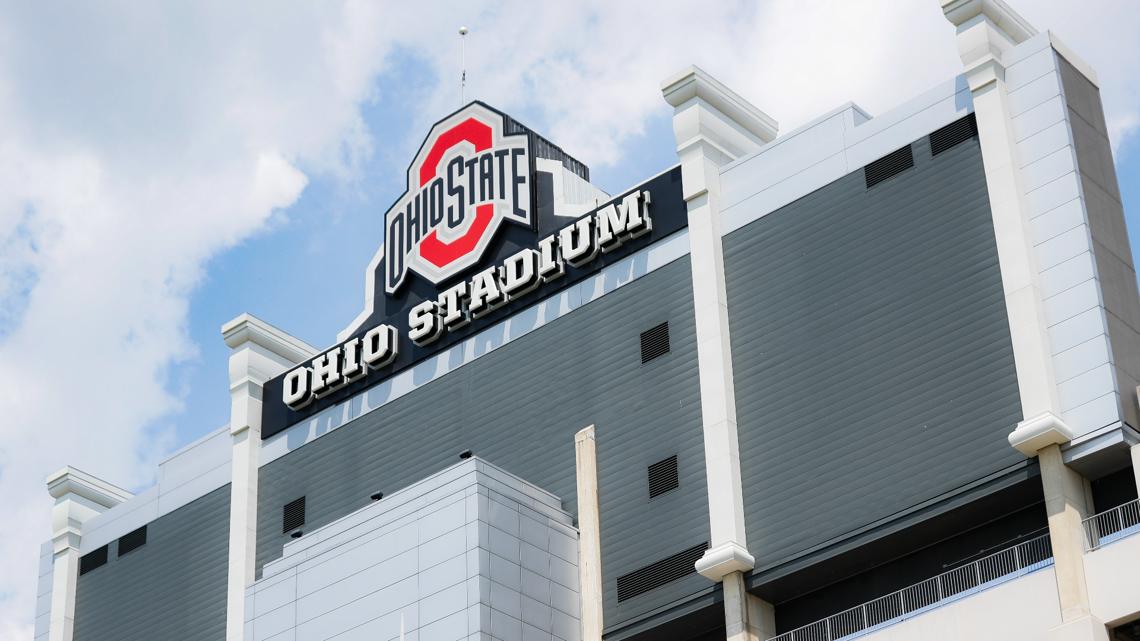


 :
: 





 – https://t.co/6eaVo7AiM7
– https://t.co/6eaVo7AiM7
